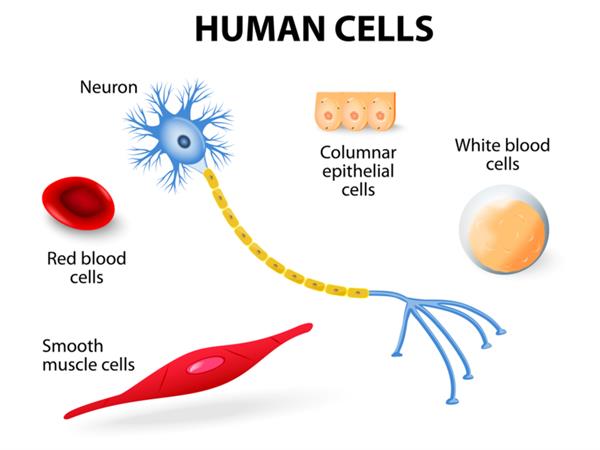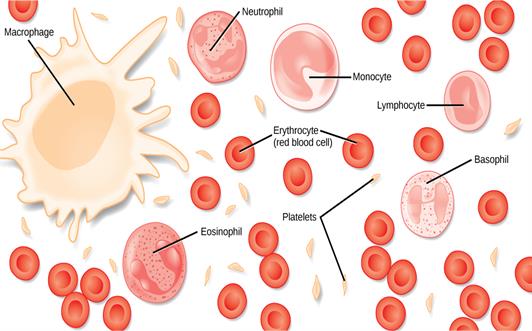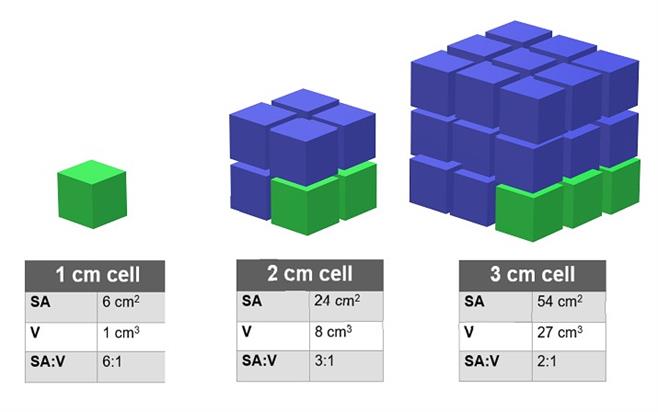
PUMPA - SMART LEARNING
எங்கள் ஆசிரியர்களுடன் 1-ஆன்-1 ஆலோசனை நேரத்தைப் பெறுங்கள். டாப்பர் ஆவதற்கு நாங்கள் பயிற்சி அளிப்போம்
Book Free DemoDifferent types of cell shapes
- Cell shape can vary into many forms such as spherical, oval, elliptical, spindle shape, polygonal, isodiametric or flat plate-like.
- Each shape of the cell has a specific function of its own.
- The cell's constituent is enclosed in a membrane, which provides shape to the plant and animal cells. Some cells, like amoeba and white blood cells, can change their shape.
- Plant cells and animal cells have almost permanent shapes.
- Different parts of the body perform individual functions. In doing their role, these cells have specific shapes of their own.
For example,
- Heart functions to pump blood, kidney to excrete waste, stomach to digest food.
- The muscle cells are elongated and contractile that help in the movement of bones.
- The red blood cells are biconcave shaped. This kind of shape enables RBC's to move through capillaries and thus permit gaseous exchange quickly.
- Smooth muscle cell spindle-shaped or fusiform shaped involuntary non-striated muscle, can be found in all hollow organs (such as bladder, stomach).
- Fat cell (adipose cells) are specialised for the storage of energy in the form of triglycerides. When viewed under a microscope fat cells look like elliptical shaped.
- Ovum is a spherical shaped immotile cell. Egg is larger in shape, and a larger cell has very less surface to volume ratio. But egg needs to accommodate more nutrients inside it. The shape of a sphere has the lowest possible surface area to volume ratio, which can accommodate the maximum amount of nutrients even though it has a lesser surface area.
- Sperm is a minute, microscopic, knobbed thread-like structure and motile. Male gamete involved in the process of reproduction and contribute a set of chromosomes.

Different types of human cells according to their shapes
Blood cells

Different types of blood cells
Types | Shape | Function |
RBC (Erythrocyte) | Biconcave disc-shaped, no nucleus, red in colour because of haemoglobin. | Transports oxygen and carbon dioxide. |
WBC (Leucocytes) | Spherical shape with nucleus, white in colour because they lack haemoglobin. | It protects our body from pathogens (disease-causing agents) and provides immunity. |
Platelets (Thrombocytes) | They are shaped like a plate; that way it is called as platelets. | Releases chemicals necessary for blood clotting. |
Surface area to volume ratio

Surface area to volume ratio
The picture showing three cubes with sides of length \(1 cm\), \(2 cm\) and \(3 cm\) and has surface to volume ratios \(6:1\), \(3:1\) and \(2:1\), respectively.
So, we can see a relationship that as the volume of an object increases, its surface area decreases.
As the plant's size increases, its volume increases, and the amount of nutrients required will also increase. But the surface area of plant's roots decrease and the amount of nutrients intake will also decrease.
So, we can see a relationship that as the volume of an object increases, its surface area decreases.
As the plant's size increases, its volume increases, and the amount of nutrients required will also increase. But the surface area of plant's roots decrease and the amount of nutrients intake will also decrease.
To overcome this problem, plants and animals have specialized cells such as,
i) Microvilli in human small intestine,
ii) Root hairs of plants.
The specialized shape of these cells enables them to have a higher surface area to volume ratio for a relatively large volumes.
The shape of a cell greatly influences its specific function:
1. RBC's pass through narrow capillaries and transport oxygen. So it has a round Biconcave, discoidal shape to facilitate its function.
2. Muscle cells are elongated for contraction.
3. For motility, sperms have tail.
4. The primary function of the nerve cell is to coordinate and control the different parts of the body. Nerve cells are very long and elongated which facilitate transmitting impulses to distant places from various body parts to the brain and vice-versa,
5. The root hair cells also have prolonged areas that increase "surface area to volume ratio". Plant absorbs water from the soil through osmosis with the help of root hair.
6. The primary role of smooth muscle is to control the diameter, wall movement, and wall stiffness of the hollow organs (such as stomach, small intestine).
7. The function of ovum is to act as a female gamete and share a set of chromosomes in reproduction with a male gamete.
Reference:
https://www.freepik.com/premium-vector/common-cells-human-body_2530607.htm
https://commons.wikimedia.org/wiki/File:Unit_cell_for_SA_to_V_ratio_with_tables.png
https://upload.wikimedia.org/wikipedia/commons/4/45/Figure_33_02_11.jpg